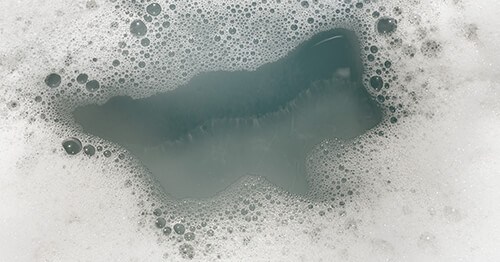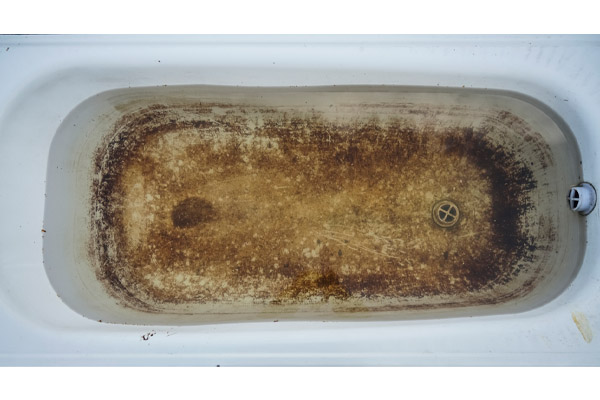Deciphering the Causes of Sewage in the Bathtub
Deciphering the Causes of Sewage in the Bathtub
Blog Article
The author is making a few good points on Why is Sewage Backing Up Into My Bathtub? as a whole in the article following next.

Sewer backup in the tub can be a traumatic and unhygienic issue for any house owner. Not only is it inconvenient, however it likewise positions serious health and wellness dangers and suggests underlying issues with the plumbing system. Comprehending why sewage is showing up with the bathtub is essential for taking suitable action to address the issue effectively.
Introduction to the Problem
Recognizing the Issue
When sewage starts backing up into the tub, it's a clear sign of a trouble with the water drainage system. The wastewater that should be moving far from your home is rather finding its way back right into your home, which can lead to significant damage and carcinogen.
Possible Causes
Numerous elements can add to sewage back-up in the bathtub. From blockages in the sewage system line to concerns with the plumbing facilities, identifying the source is crucial for locating a remedy.
Common Reasons for Sewer Backup
Obstructions in the Sewage System Line
One of one of the most usual root causes of sewage backup is a clog in the sewer line. This can take place due to the build-up of particles, oil, or international things in the pipes, stopping correct circulation and causing sewage to back up right into your bath tub.
Tree Root Invasion
Tree roots seeking wetness and nutrients can infiltrate sewage system lines through tiny fractures or joints. Over time, these origins can grow and increase, creating significant damages to the pipes and resulting in sewer back-up issues.
Aging Framework
Older homes might have obsoleted plumbing systems that are much more susceptible to corrosion, splits, and degeneration. As pipelines age, they become much more vulnerable to leakages and blockages, raising the likelihood of sewage back-up events.
Heavy Rainfall or Flooding
Throughout durations of heavy rainfall or flooding, the drain system might end up being overwhelmed with excess water, triggering back-ups and overflows. This can result in sewer supporting into bathtubs and various other components inside the home.
Health And Wellness Risks Associated with Sewer Backup
Contamination of Supply Of Water
Sewage backup can contaminate the supply of water in your home, presenting a serious health risk to you and your household. Exposure to infected water can bring about intestinal problems, skin infections, and various other ailments.
Spread of Disease
Sewer has dangerous microorganisms, infections, and parasites that can cause a range of diseases, consisting of liver disease, cholera, and gastroenteritis. Coming into contact with sewage or infected surfaces places you in jeopardy of infection.
Mold and mildew Development
Moisture from sewer back-up can produce perfect problems for mold and mildew growth in your house. Mold spores can worsen breathing problems and create allergic reactions in delicate people, making timely cleaning crucial.
Indications of Sewage Backup
Foul Odors
Undesirable smells emanating from drains or fixtures, specifically in the restroom, may suggest sewage back-up issues. These odors are often strong and consistent, signaling an issue that needs instant focus.
Slow Draining Fixtures
Bath tubs, sinks, and toilets that drain pipes gradually or not whatsoever could be experiencing sewage backup. If multiple components are influenced simultaneously, it's likely that the problem originates from an usual factor, such as the primary sewage system line.
Gurgling Noises
Odd gurgling or gurgling sounds originating from drains pipes when water is running elsewhere in the house are indicative of air trapped in the plumbing system. This air accumulation can result from sewage backup and need to be checked out immediately.
Immediate Actions to Take
Switching Off Water System
In case of sewer backup, it's essential to turn off the water to avoid more contamination and damages. Find the major water shutoff valve in your home and closed it off up until the problem can be solved.
Speaking To a Professional Plumber
Managing sewage back-up is not a DIY task. Contact a qualified plumber with experience in dealing with sewage-related concerns to evaluate the scenario and perform necessary repair services or cleanups.
Avoiding Contact with Polluted Water
Until the sewage backup is resolved, avoid contact with contaminated water to prevent the spread of microorganisms and virus. Put on safety gear if you must remain in the afflicted area and wash your hands completely later.
Safety nets
Normal Upkeep of Sewer Lines
Set up routine inspections and upkeep of your sewage system lines to recognize and address possible concerns prior to they intensify into significant problems. This can consist of cleaning debris, examining for tree root intrusion, and repairing any kind of damaged pipes.
Setting Up Backwater Valves
Consider setting up backwater shutoffs in your plumbing system to prevent sewer from receding into your home during periods of heavy rainfall or flooding. These valves automatically close when water starts backing up, protecting your residential property from contamination.
Correct Disposal of House Waste
Stay clear of flushing anything besides toilet paper and human waste down the toilet to avoid clogs and obstructions in the sewer line. Dispose of oil, oil, and other home chemicals effectively to reduce the risk of plumbing issues.
Cleaning Up After Sewer Backup
Disinfection Procedures
Thoroughly decontaminate and sterilize affected areas after sewage back-up to remove dangerous germs and prevent mold growth. Usage appropriate cleaning items and safety equipment to ensure risk-free and efficient clean-up.
Repair of Influenced Locations
Repair any kind of damages to flooring, walls, or fixtures brought on by sewer backup. Depending upon the degree of the damage, you may require to replace carpeting, drywall, or various other materials to restore your home to its pre-loss problem.
Sewage Coming Up Through the Bathtub?
Understanding the Plumbing System:
To understand why sewage is coming up through your bathtub, it is essential to have a basic understanding of the plumbing system. The plumbing system is a complex network of pipes, valves, fixtures, and drains that work together to provide clean water to your home and remove waste and sewage. The system consists of two parts: the supply system and the drainage system.
The supply system brings clean water to your home, while the drainage system removes wastewater from your sinks, toilets, showers, and bathtubs. The drainage system is connected to the main sewer line, which carries the wastewater to the municipal sewage treatment plant or septic tank.
Causes of Sewage Coming Up Through the Bathtub:
Sewage coming up through the bathtub can be caused by various factors. Some of the most common causes are:
Clogged Drain Pipes:
One of the most common reasons for sewage coming up through the bathtub is a clogged drain pipe. Over time, debris, hair, soap scum, and other foreign objects can accumulate in the drain pipes, leading to a blockage. This can cause the wastewater to back up and come out of the bathtub.
Main Sewer Line Blockage:
Another reason for sewage coming up through the bathtub is a blockage in the main sewer line. The main sewer line connects your home’s drainage system to the municipal sewer system. If the main sewer line gets clogged due to tree roots, grease buildup, or other obstructions, it can cause sewage to back up into your home’s plumbing fixtures, including the bathtub.
Sewage Backup:
Sewage backup is another common cause of sewage coming up through the bathtub. Sewage backup occurs when there is a problem with the municipal sewer system, such as heavy rainfall, flooding, or a malfunctioning pump. When this happens, sewage can flow back into your home’s drainage system and cause sewage backup in your plumbing fixtures, including the bathtub.
Broken or Damaged Pipes:
Finally, broken or damaged pipes can also cause sewage to come up through the bathtub. Over time, pipes can deteriorate due to age, corrosion, or external factors such as shifting soil. When pipes break or crack, wastewater can leak out and cause sewage backup in your plumbing fixtures.
Signs of Sewage Coming Up Through the Bathtub:
Some of the signs that sewage is coming up through your bathtub include:
Foul odor: If you notice a strong, unpleasant odor coming from your bathtub drain, it could be a sign of sewage backup. The smell is caused by the buildup of organic waste in the pipes. Slow drainage: If your bathtub drains slowly or not at all, it could be a sign of a clogged drain pipe or a more severe problem with the main sewer line. Gurgling sounds: If you hear gurgling sounds coming from your bathtub drain or other plumbing fixtures, it could indicate that air is trapped in the pipes due to a blockage. Prevention Measures:
The best way to prevent sewage from coming up through the bathtub is to take preventative measures. Here are some practical tips:
Regular Drain Cleaning:
Regular drain cleaning can help prevent clogs and keep your pipes in good condition. You can use a plunger, drain snake, or enzymatic drain cleaner to remove any buildup of hair, soap scum, or other debris in your bathtub drain.
Proper Waste Disposal:
Improper waste disposal can also contribute to sewage backup. Avoid flushing non-biodegradable items, such as paper towels, feminine hygiene products, or wipes down the toilet. Also, be mindful of what you pour down the drain, such as grease, oil, or coffee grounds, as they can cause clogs.
Professional Plumbing Maintenance:
Regular plumbing maintenance can help prevent plumbing emergencies, such as sewage backup. A professional plumber can inspect your pipes, identify any potential issues, and perform preventative measures, such as hydro jetting, to clean your pipes.
Hydro Jetting:
Hydro jetting is a powerful method that uses high-pressure water to clean the pipes thoroughly. It can remove even the most stubborn clogs and prevent future blockages.

As an enthusiastic person who reads on What To Do If Sewage Starts Backing Up Into the Shower, I think sharing that section was a good thing. If you please take the opportunity to promote this page if you liked it. Thanks a bunch for being here. Don't hesitate to check up our blog back soon.
Call Today
Report this page